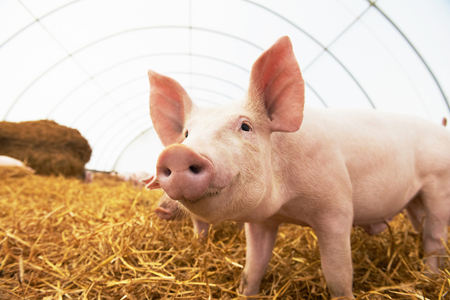In a three-year collaboration with the NSW Department of Primary Industries, Steven Djordjevic, Professor of Infectious Diseases in the ithree Institute, will lead a team exploring how gut bacteria in pigs respond to antibiotics and probiotics.
"This project will allow us to understand how antibiotic resistance develops and how it moves within complex microbial communities – in other words, to understand the behaviour of gut flora," says Professor Djordjevic.
"We can't solve this problem unless we understand the ecology of resistance and to do that we need new methods of investigation.
"The project will also provide new baseline knowledge of what constitutes healthy porcine gastrointestinal tract flora and how that flora is affected by antibiotic and probiotic formulations."
Most research into antibiotic resistance is focused on bacteria that cause problems in hospital and nursing home environments.
However, Professor Djordjevic says antibiotic resistance is a much larger problem and extensive research is needed to examine antibiotic resistance in food animal production and aquaculture.
"Antibiotic resistance genes are often located on mobile genetic elements and it is important to determine how these elements move through the entire food ecosystem. More antibiotics are used for agricultural purposes – for the treatment of infections, growth promotion and to prevent the spread of disease – than in human health care."
Pork is the most widely consumed meat in the world, followed by poultry and beef, according to figures from the UN Food and Agriculture Organisation.
In China alone, says Professor Djordjevic, pork production generates an estimated 600 million tonnes of swine manure annually. This waste is heavily contaminated with excreted antibiotics. With the waste then used to fertilise pastures and crops, antibiotics make their way into soils, waterways and the food chain.
Since antibiotics were introduced more than 70 years ago, they have greatly reduced illness and death from infectious diseases. However, human dependence on them and their routine use in food production means medicine is running out of options.
The World Health Organisation says antimicrobial resistance, which includes antibiotic resistance, is "an increasingly serious threat to global public health that requires action across all government sectors and society".
Professor Djordjevic’s project, "Improved biosecurity through the engineering of microbial ecosystems", is supported by an Australian Research Council (ARC) linkage grant of $520,000.
Specifically, his team will study how differentEscherichia coli (E. coli) populations colonise different regions of the gut of a pig. While most
- coli are normally occurring bacteria and do not cause disease in humans, some are serious pathogens responsible for food contamination leading to gastrointestinal and urinary tract infections.
"We will investigate how microbial populations in the guts of pigs respond to various challenges, including an assault by an antibiotic and two different probiotic formulations," Professor Djordjevic says.
The patented probiotic formulations, provided for the project by the NSW DPI, are designed to promote healthy gut flora in the porcine gastrointestinal tract.
The technologies needed to gauge how these formulations influence gut bacteria are being developed by Associate Professor Aaron Darling, also of the ithree Institute, while Professor Djordjevic and his team will conduct genomic analyses of E. coli populations.
"We will characterise the potential threat porcine E. coli pose for human health by identifying the virulence genes and the mobile antibiotic resistant genetic elements they carry," says Professor Djordjevic.
He says development of vaccines for economically important diseases and probiotic formulations that improve gut flora in food production systems can reduce use of antibiotics and improve animal health – and hopefully reduce the spread of antibiotic resistance.


